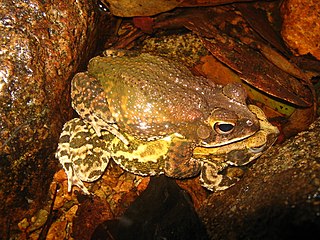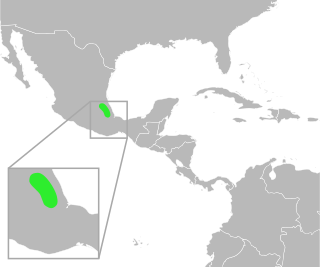 W
WAnaxyrus compactilis is a species of toad in the family Bufonidae. It is endemic to Mexico. It is a little known species associated with desert and shrubland. It is threatened by habitat loss caused by conversion of land for agriculture.
 W
WThe California giant salamander is a species of salamander in the family Ambystomatidae. Dicamptodon ensatus is endemic to California, in the western United States. The species once additionally included individuals now belonging to the species D. aterrimus and D. tenebrosus, under the common name Pacific giant salamander, which now refers to the genus and family.
 W
WThe California newt or orange-bellied newt, is a species of newt endemic to California, in the Western United States. Its adult length can range from 5 to 8 in. Its skin produces a potent toxin.
 W
WThe California slender salamander is a lungless salamander that is found primarily in coastal mountain areas of Northern California, United States as well as in a limited part of the western foothills of the Sierra Nevada, California, in patches of the northern Central Valley of California, and in extreme southwestern Oregon. What makes this amphibian notable is that this species resides primarily in a limited range within California as one of a handful quasi-endemic amphibians in the state.
 W
WThe Gulf Coast toad is a species of toad native to eastern and southeastern Mexico and Central America as far south as Costa Rica.
 W
WIncilius marmoreus, commonly known as Wiegmann's toad or marbled toad, is a species of toad in the family Bufonidae. It is endemic to Mexico and found along the Pacific coastal plain between northern Sinaloa and Chiapas. There is also an isolated population in the region of Veracruz on the Atlantic coast, and a record from Hidalgo.
 W
WKaloula baleata, the flower pot toad or sometimes the smooth-fingered narrow-mouthed frog, is a species of narrow-mouthed toad. It is native to India, Borneo, Indochinese Peninsula, Java, Malay Peninsula and Philippines where it lives in lowland rainforests and is tolerant of disturbed sites. The IUCN lists it as being of "Least Concern".
 W
WThe large-crested toad is a critically endangered species of true toad that is endemic to cloud forests in the central Sierra Madre Oriental in Puebla and Veracruz, Mexico. Once feared extinct, it has recently been rediscovered at two sites in Puebla where it is uncommon. The reasons for its decline are habitat loss and pollution, and there are no recent records from Veracruz.
 W
WRhinella horribilis is the scientific name used for populations of the cane toad or giant toad located in Mesoamerica and north-western South America when they are considered to be a separate species from Rhinella marina, a name which is then mostly restricted to Amazon basin populations. R. horribilis was originally described from Mexico as Bufo horribilis before later being considered a synonym of Bufo marina and later Rhinella marina. The specific epithet horribilis has now been revived after a 2016 study argued that these populations in fact make up two separate species.